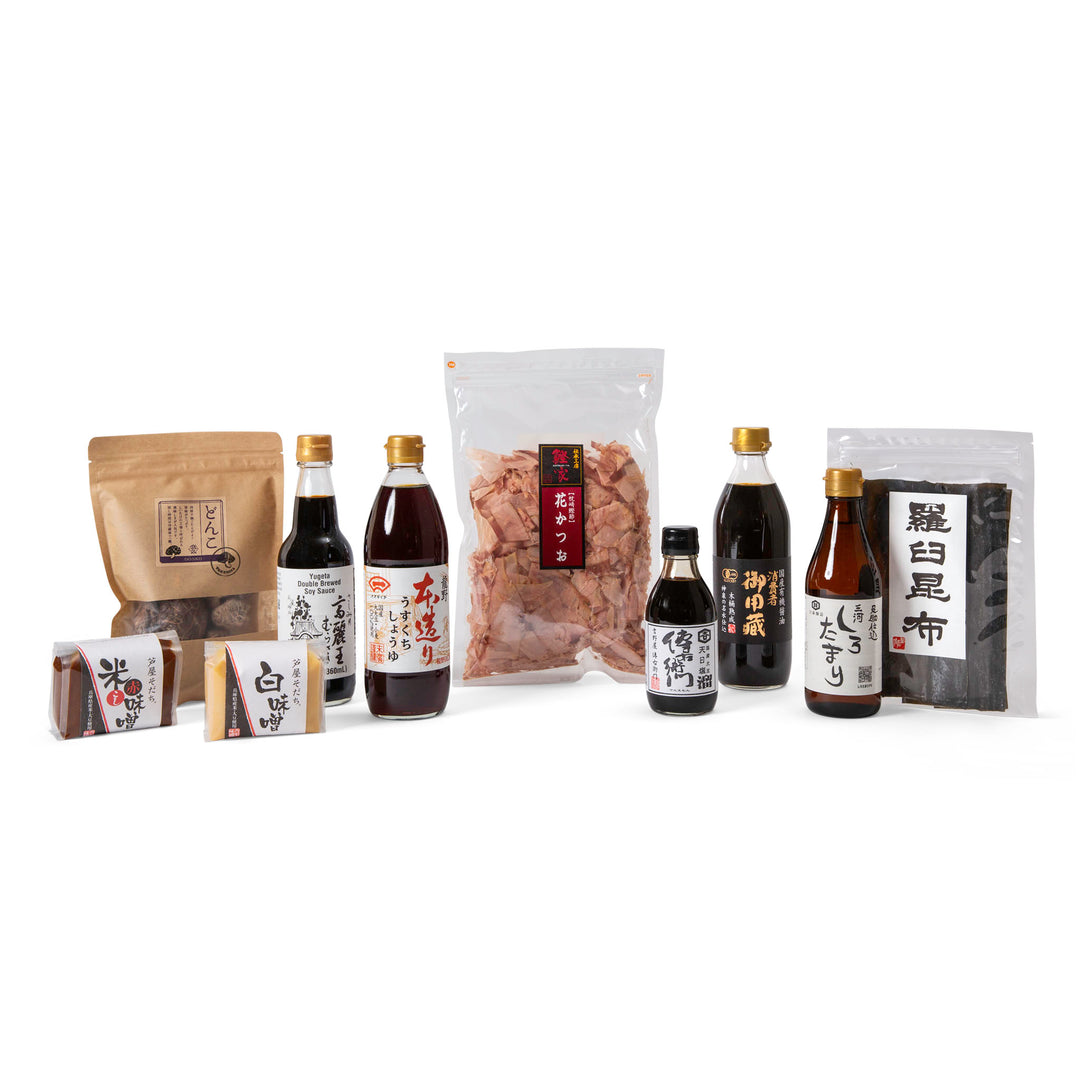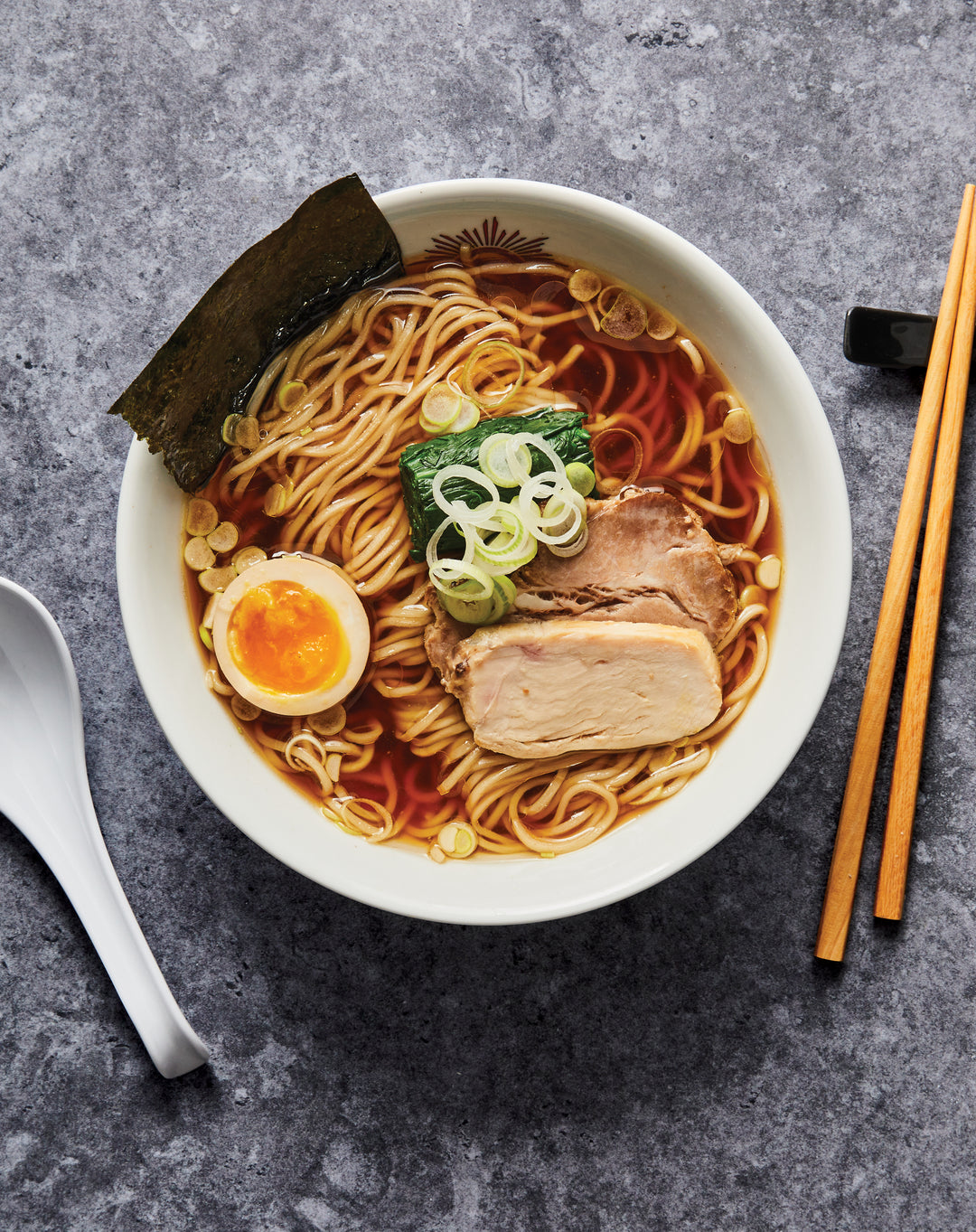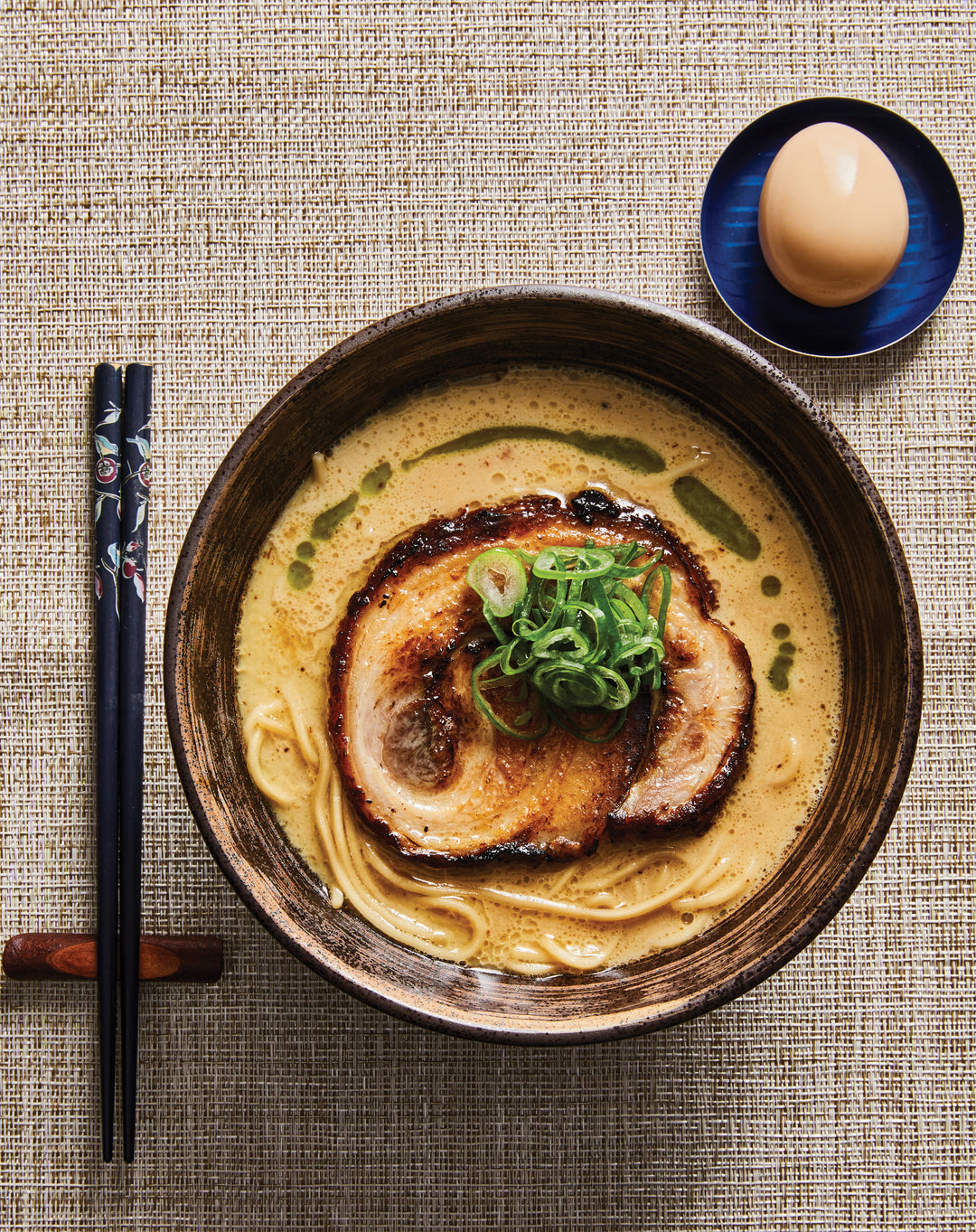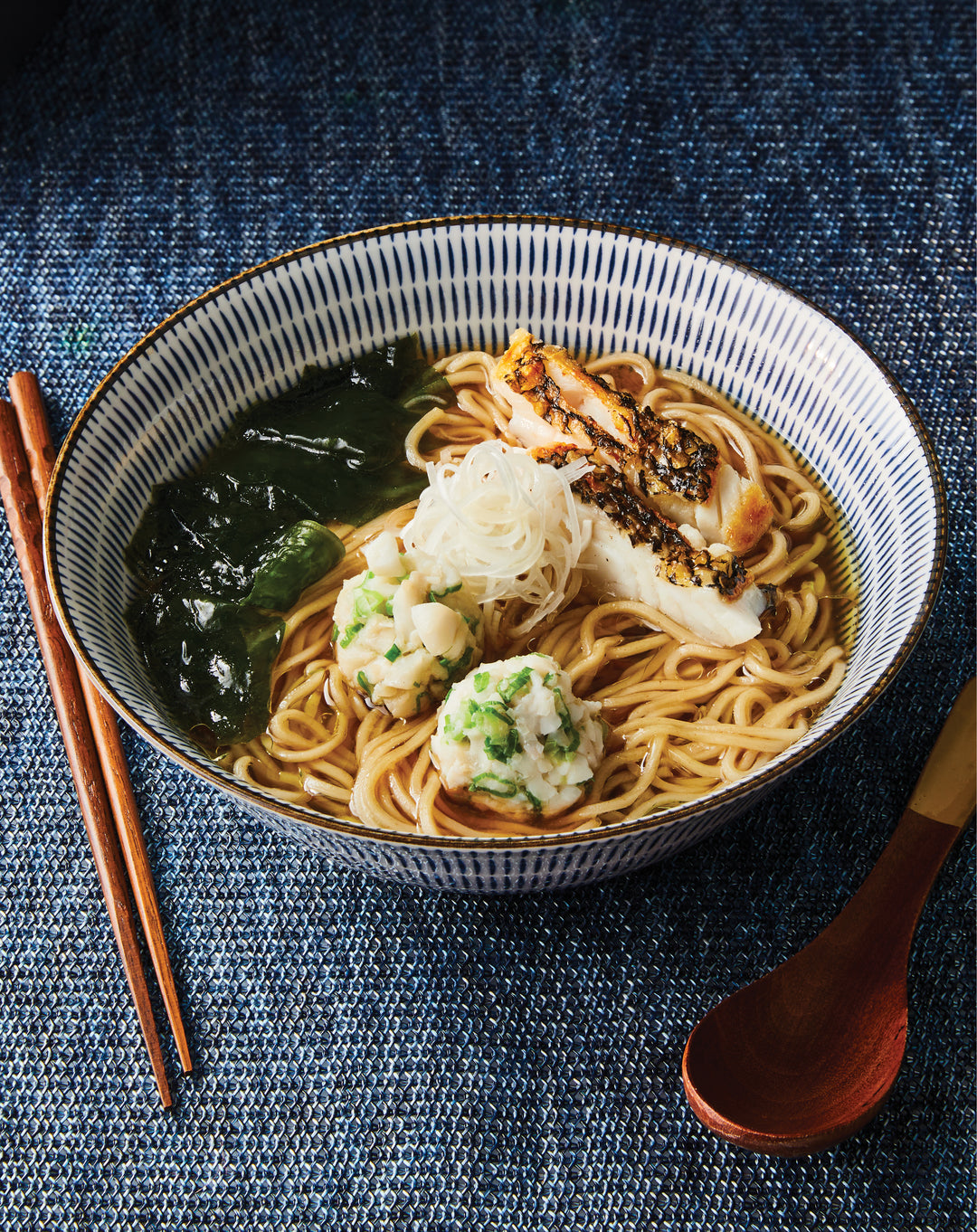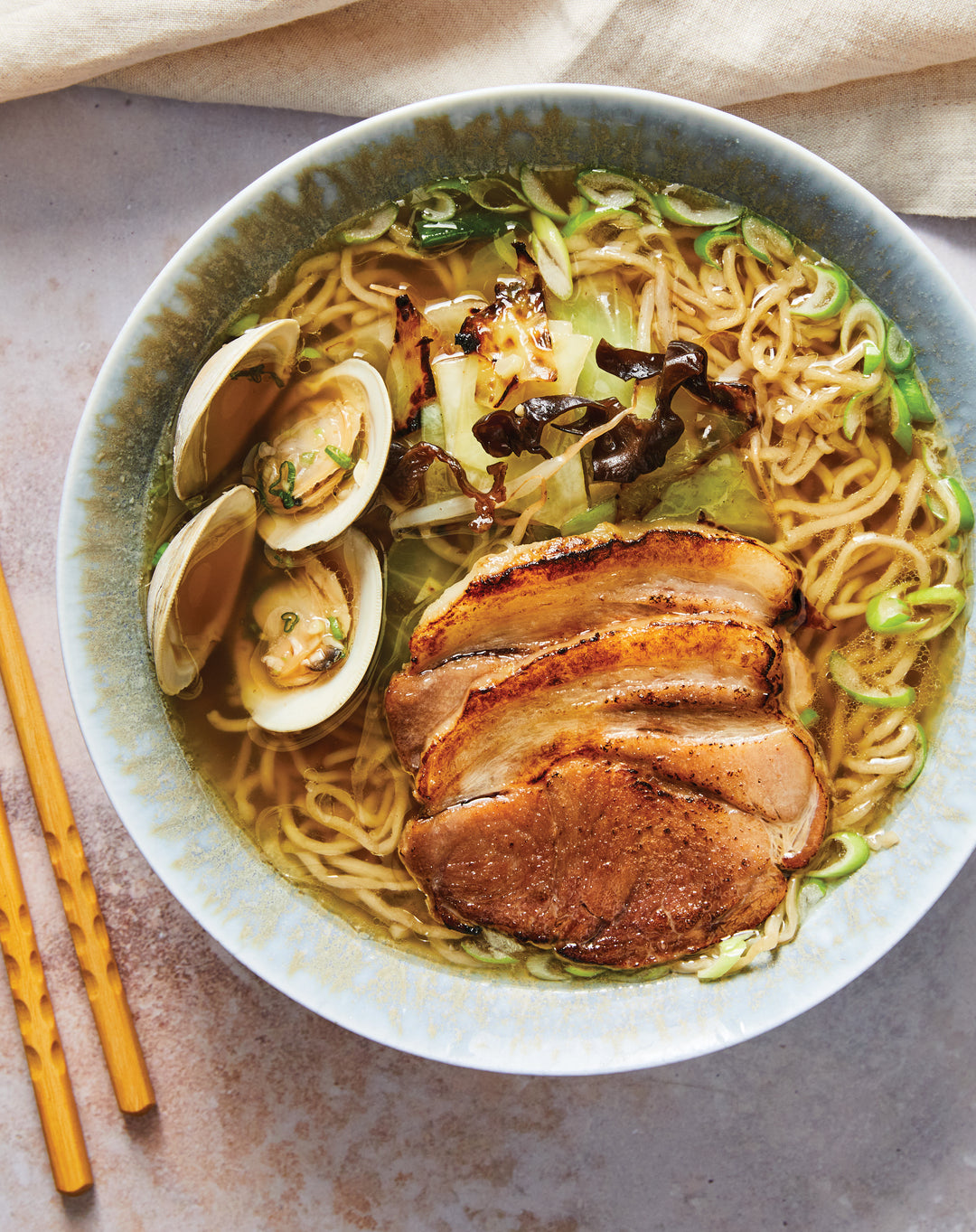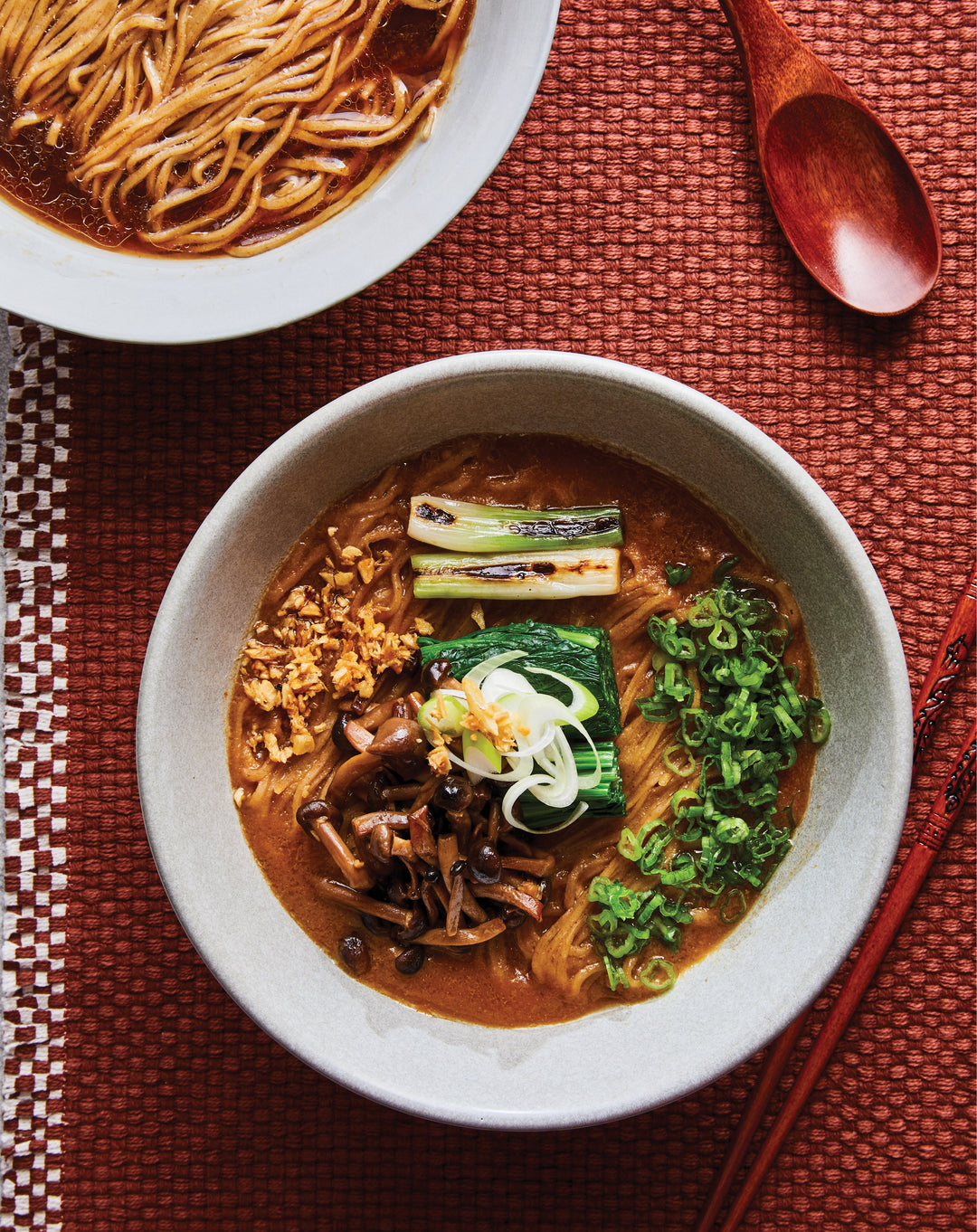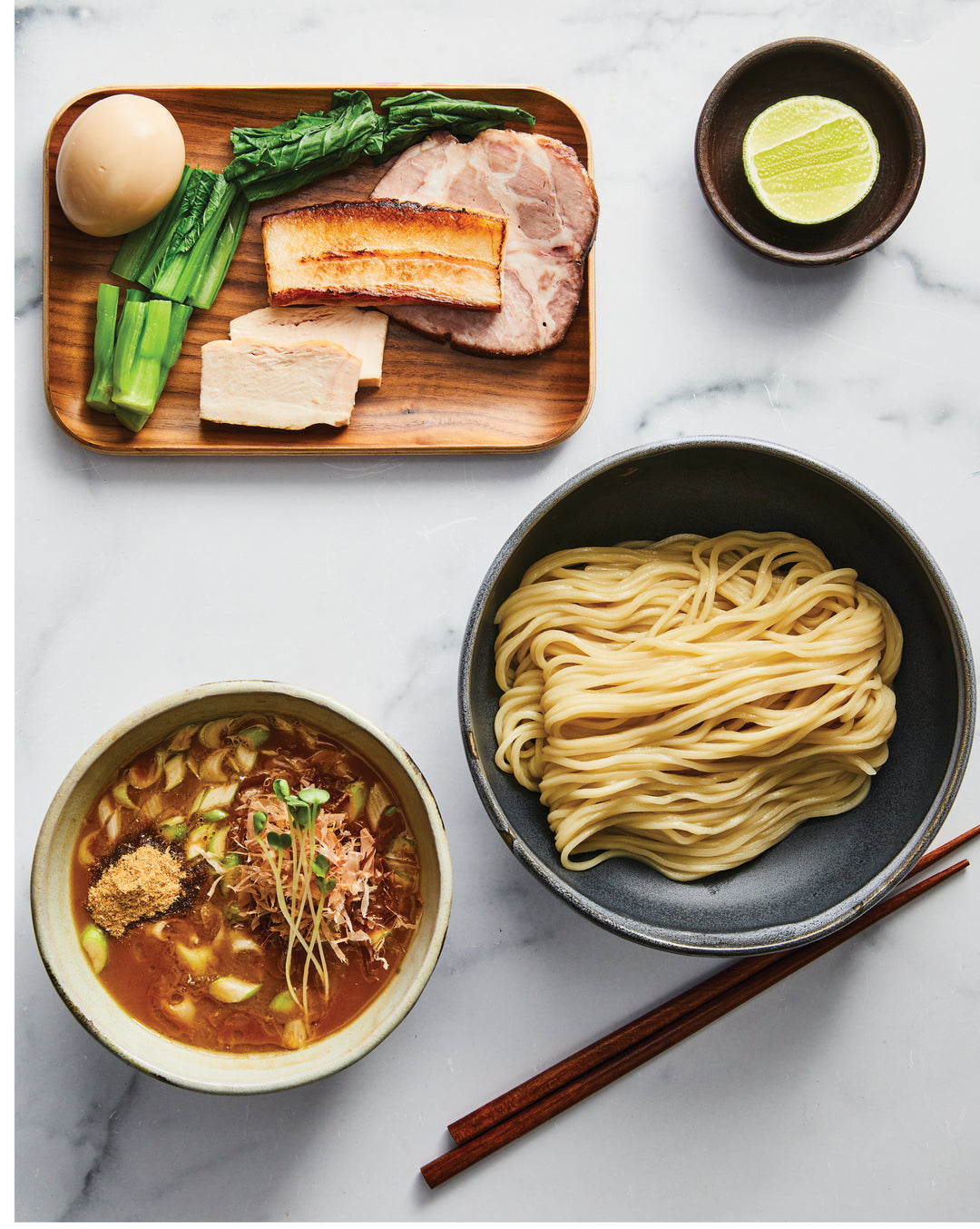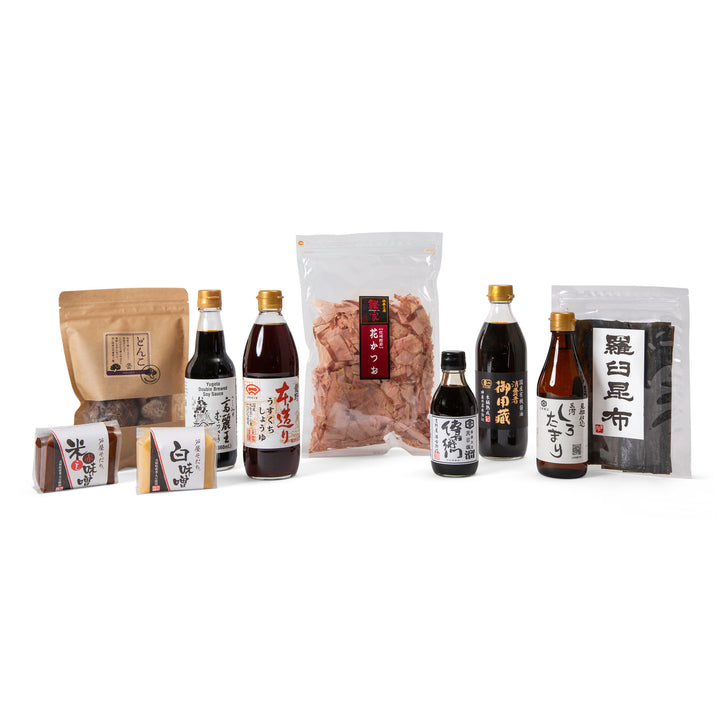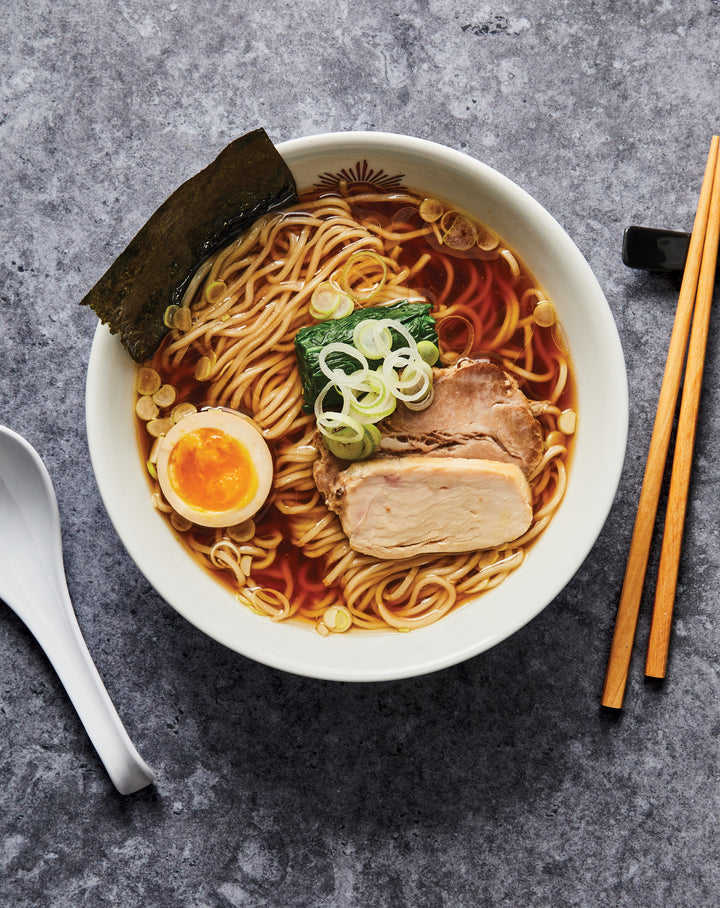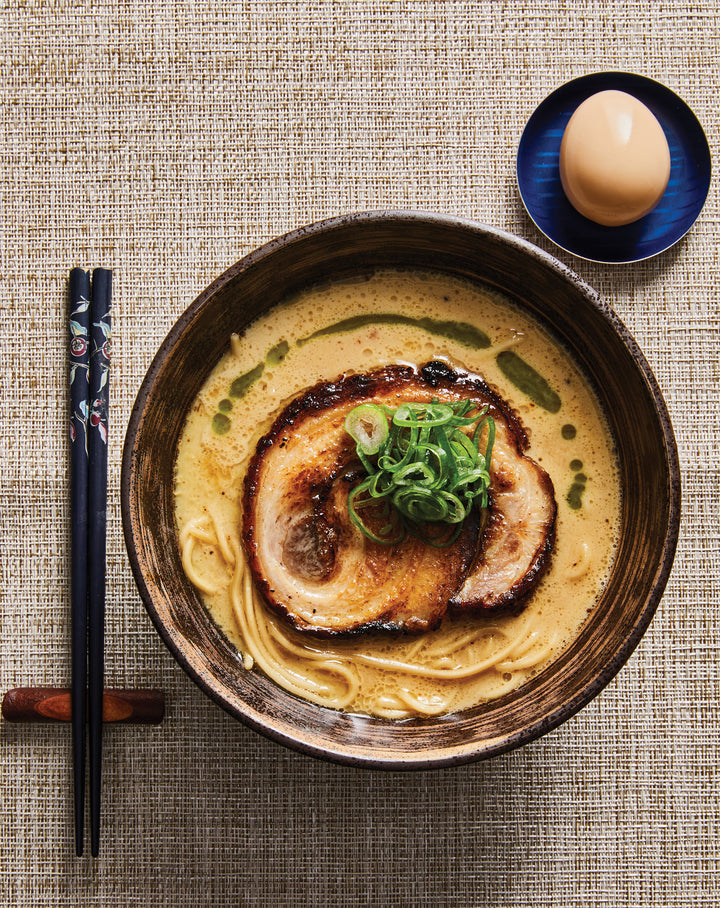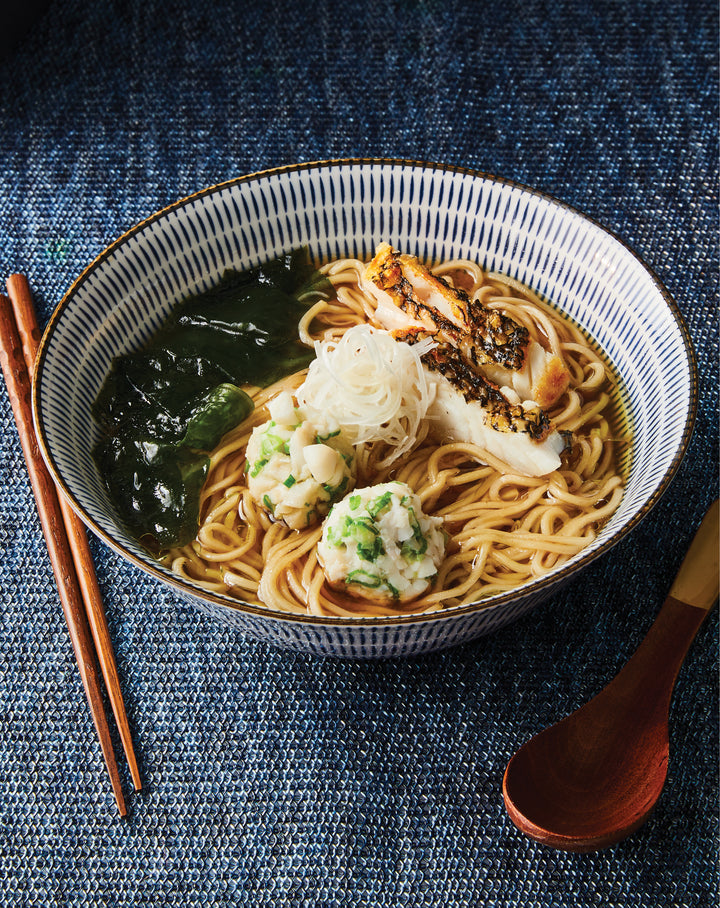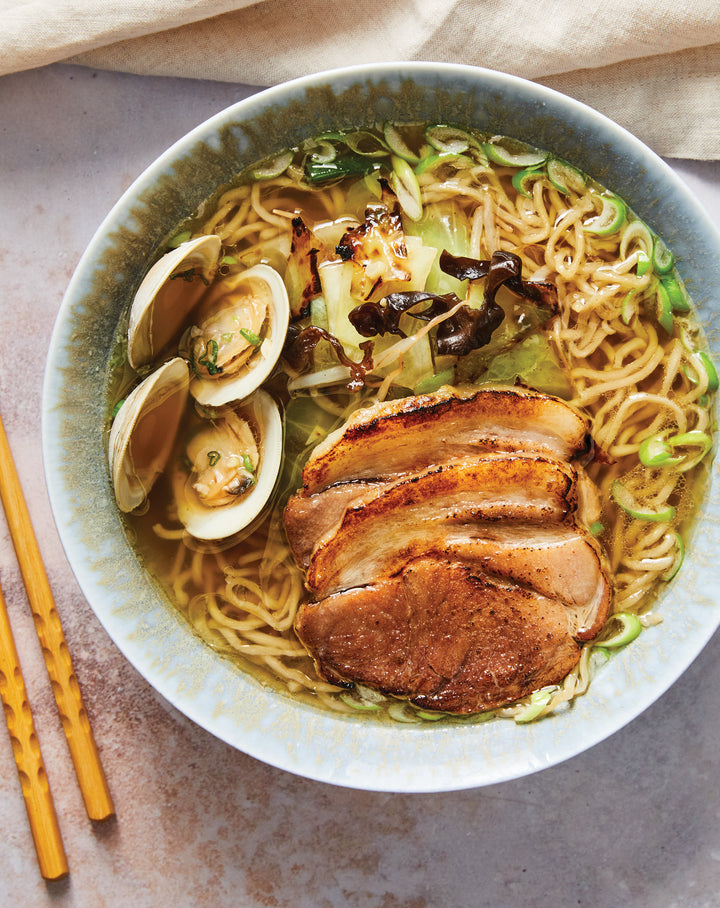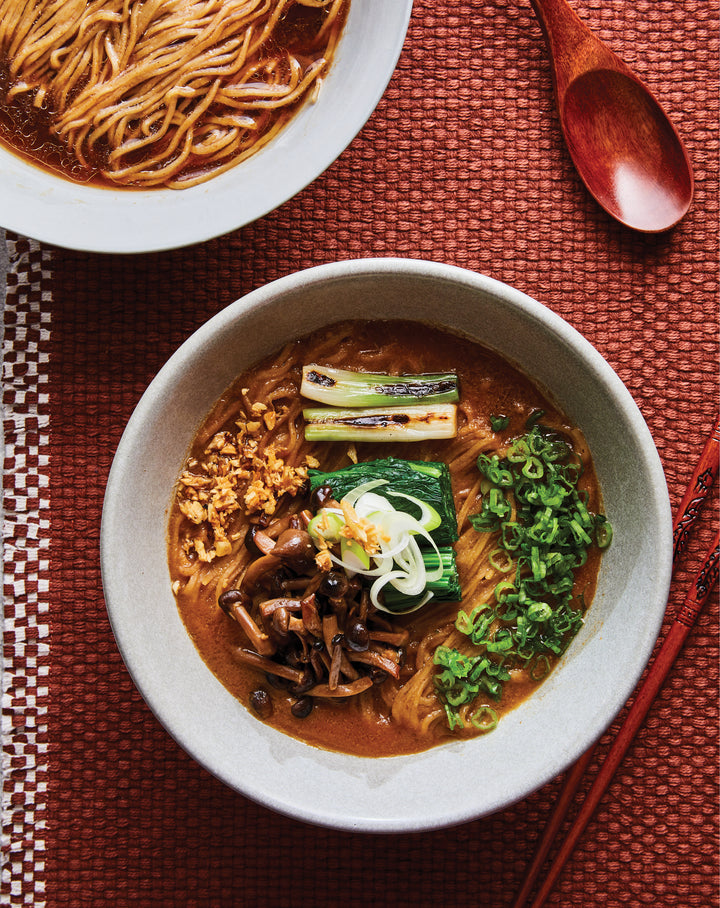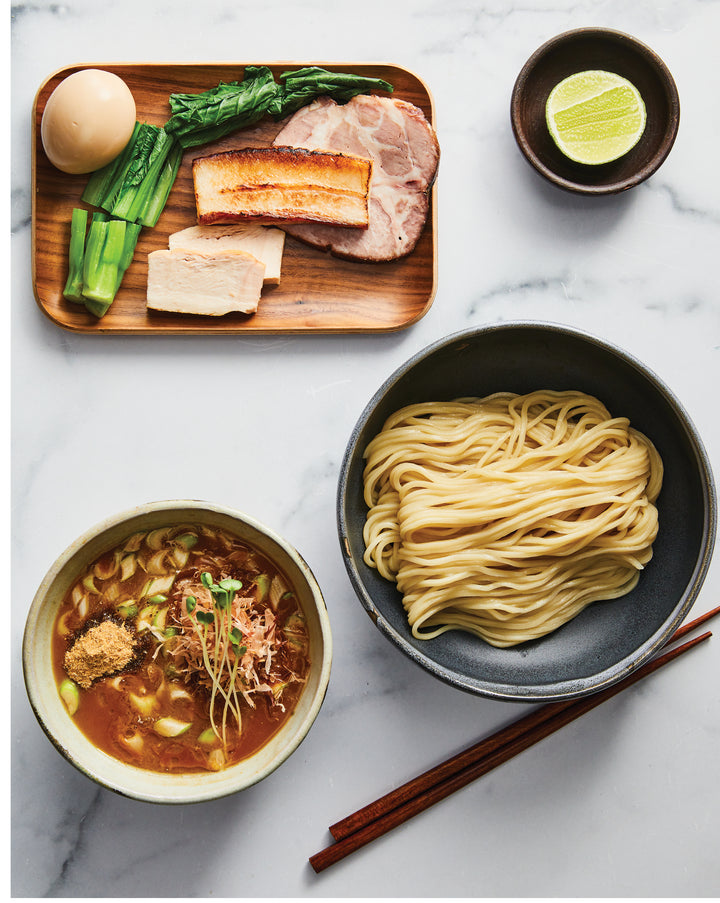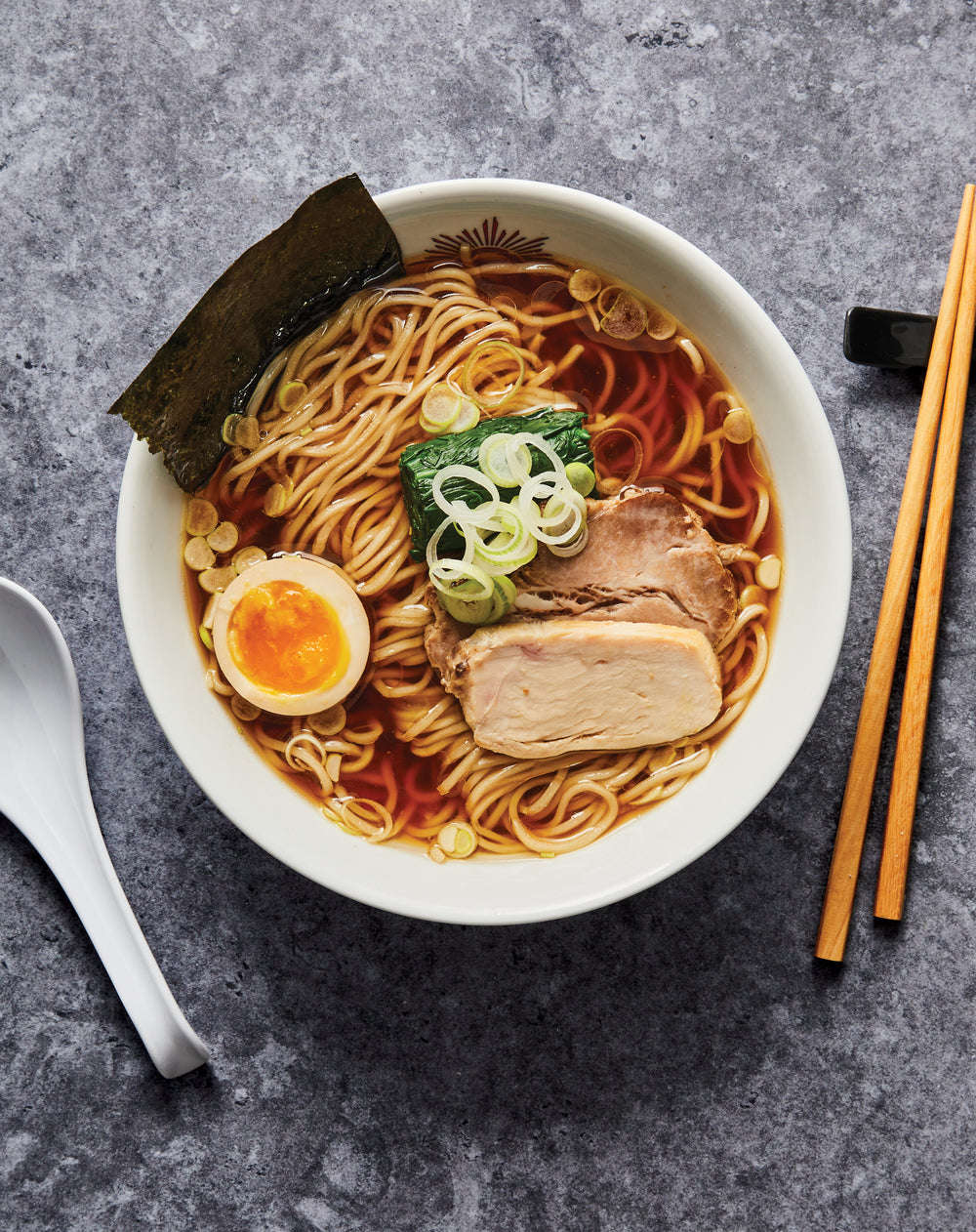Homemade Ramen Ingredient Box
- Low stock - 6 items left
- Backordered, shipping soon
-
We first met Sho in 2021 while he was exploring the five types of soy sauce. When he reached out about collaborating on an ingredient kit for his new book, Homemade Ramen, it felt like a natural fit. His deep curiosity and love for Japanese flavors align perfectly with what we do, and we are eager to see his recipes brought to life using artisanal ingredients. With products hand-selected with Sho, this ingredient box is meant to pair with his new cookbook (not included in this kit) to dive deep into ramen cooking at home. Purchasing the ingredient box saves you 10% and includes free shipping!
Please note: this ingredient box does not include a copy of the cookbook Homemade Ramen. To buy the ingredient box with the book, click here. To buy the book only, click here.
In author Sho Spaeth’s own words:
Making good ramen is easy. Making great ramen is not—and it ultimately comes down to finding and using the best ingredients.
While we’re blessed with many sources of fine pork, poultry, and vegetables in the U.S., it can be very difficult to find reliable sources for the ingredients that form the backbone of Japanese cooking, like soy sauce, konbu, and katsuobushi. That’s why I’m excited to partner with The Japanese Pantry to offer this ingredient kit so you, too, can make incredible ramen at home!
I picked all of these ingredients because they’re what I use at home—not just for ramen, but for a range of preparations. While the recipes in my cookbook were developed and tested using more widely available versions (to ensure that any reader in the country could reliably produce a great bowl of ramen), when you use, say, the Suehiro Usukuchi instead of your standard supermarket shoyu, the recipes really sing—with layers of complexity that even the best cooking techniques can’t achieve on their own.
Here’s how you can use each ingredient, both in the context of ramen (and my cookbook) and in your everyday cooking life.
Suehiro Usukuchi: I used to think usukuchi was a scam, as I had only experienced the blended product commonly found on Japanese grocery shelves, but this usukuchi was a revelation—deeply flavored, with a beautiful color. Everything you make with it tastes and looks amazing. It’s ideal for use in any shoyu tare (seasoning) in the book and tints the soup a faint amber. One warning: if you use it as your go-to cooking soy sauce (and you should), it will ruin other soy sauces for you.
Ito Shoten Tamari: Another revelation—this tamari can transform a simple dish of grilled salted mackerel into something you’d find at a fine restaurant, just by being brushed over the flesh right after it comes off the grill. Tamari is also an essential part of the simple blended shoyu tare I use in my Roasted Chicken Shoyu Ramen; when made with Ito Shoten’s tamari, the ramen tastes richer and more complex, with subtle, unplaceable umami notes. I also like to drizzle it over poached vegetables, like ohitashi or bitter gourd topped with katsuobushi.
Yamaki Jozo: This is a great soy sauce—so good that you’ll want to avoid applying heat to it until just before serving to preserve its volatile aromas and flavors. Many of the shoyu tare recipes in the book call for incorporating half the soy sauce off-heat for this very reason, and using Yamaki Jozo for that uncooked portion is an excellent idea. It’s also incredible anywhere you’d use soy sauce in its raw form—dipping, drizzling, etc.
Yugeta Double-Brewed Soy Sauce: Saishikomi shoyu (double-brewed soy sauce) is hard to find even in Japanese grocery stores, and it’s something of a niche product. But the added complexity this fortified soy sauce provides is a key component of my Negi Shoyu Ramen with Seabura—a super-rich bowl with morsels of wobbly pork back fat floating in the soup. It’s also excellent as a dip for sashimi or drizzled over grilled aji, mackerel, Pacific saury, and other silvery, blue-skinned fish.
Nitto Jozo White Tamari: One of the challenges of making a good shio ramen is that you can’t rely on super-flavorful ingredients like soy sauce or miso. However, you can cheat by using the shiro, or white, version of tamari or shoyu—and what a cheat this Nitto Jozo number is! Deeply flavorful but quite clear, I use it in the tare for my Shio Tanmen, a clear pork stock-based ramen topped with stir-fried vegetables and marinated clams. (It’s also excellent for dipping white-fleshed fish sashimi, and great drizzled over sake-steamed clams.)
Rokko Miso: Good miso is the foundation of any dish that incorporates miso, and it’s therefore supremely important for miso ramen. My miso tare uses a blend of red and white miso, but in proportions that differ significantly from many pre-blended (awase) misos. Miso is, of course, very versatile, and this one makes amazing miso soup (especially if you make your own dashi). It’s also great as a marinade or in dressings for blanched seasonal vegetables.
Aimono Rausu Konbu: Konbu is the basis of Japanese cuisine, and this konbu will set you up for success in all kinds of preparations. In ramen, konbu is used in both the soup stocks and the tare, and the quality of your konbu is the upper limit on how great your ramen can be. Many of the book’s recipes use konbu, but when using konbu of this caliber, I strongly suggest making niban dashi (a second stock made using the same ingredients from the first) to get the most bang for your konbu buck. Niban dashi is almost as versatile as ichiban dashi (the first stock)—it’s great for poaching all kinds of things.
Matoba Suisan Katsuobushi: The most important ingredient for ramen after konbu is katsuobushi, and The Japanese Pantry has the best katsuobushi available to retail customers in the United States. It’s used in dashi, of course, but it’s also a critical element of tare, providing savoriness and a touch of sourness to many ramen bowls in the book. Above all, katsuobushi is aromatic—and one of the most noticeable differences between amazing katsuobushi and not-so-amazing stuff is the depth and intensity of its aroma. The katsuobushi in this kit is unfermented, but if you want to step up your game and explore the world of premium fermented katsuobushi, I highly recommend it. It’s more aromatic and flavorful, but also a little saltier and more acidic, so it takes some fine adjustments to make it really shine. Once you try it, though, you’ll never go back!
Takehisa Donko Shiitake: Shiitake sometimes get short shrift, but they’re one leg of the three-legged stool we know as umami. The flavorful compounds in dried shiitake work multiplicatively with those in konbu and katsuobushi, so when they’re used together, they combine, Voltron-like, to make everything taste amazing. Almost every tare recipe in the book uses dried shiitake for this reason, and the aroma and flavor of these shiitake will make you question what’s in the bags you’ve been buying at your local Japanese grocery store.
This ingredient box includes the following 10 items:
-
About Homemade Ramen:
Homemade Ramen is a must-have for anyone obsessed with ramen, cooking projects, or Japanese comfort food. Food writer and recipe developer Sho Spaeth distills 20+ years of ramen know-how into 13 distinct bowls, each broken down with 100+ step-by-step photos that cover broth, seasoning, noodles, and toppings. From Classic Shoyu and Shio Tanmen with clam stock to Miso, Spicy Tantanmen, Pork Rib Tsukemen, soupless mazemen, and a vegan chickpea ramen, the recipes are approachable yet deeply flavorful—proving that making great ramen from scratch at home is not just possible, but seriously satisfying.
About Sho Spaeth:
Sho Spaeth is lead editor and writer at ChefSteps, and was formerly a staff writer and editor at Serious Eats. He has lived in Hong Kong, Manila, and New Delhi, and currently lives in Brooklyn, New York.


